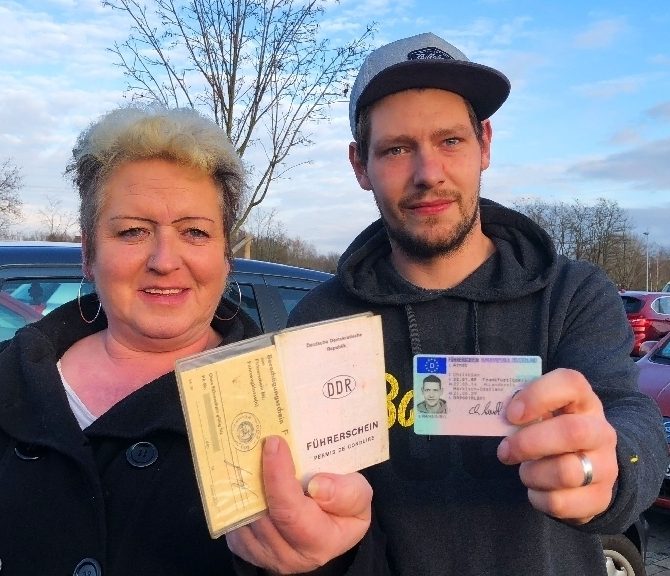The Process of Obtaining a Driver's License: An Informative Guide
Obtaining a motorist's license is a substantial milestone in numerous individuals' lives. It is typically seen as the primary step towards self-reliance and responsibility. This post offers a comprehensive overview of the process associated with getting a motorist's license, consisting of the experiences that include it. From comprehending the various kinds of licenses to navigating through the application process, this guide will help aspiring chauffeurs prepare for führerschein kaufen erfahrung the roadway ahead.
Understanding the Different Types of Driver's Licenses
Before starting the application procedure, kaufen sie Einen echten registrierten führerschein it is important to understand the different types of motorist's licenses readily available. It must be kept in mind that licensing categories may differ by state or A80-führerschein kaufen ohne vorkasse registrierten führerschein kaufen ohne anzahlung (shenasname.ir) country; nevertheless, the basic classifications are as follows:
| License Type | Description |
|---|
| Student's Permit | A restricted license permitting new motorists to practice under guidance. |
| Class C License | The most typical license type that enables people to run basic cars. |
| Class B License | Required for drivers of larger cars, such as buses or trucks. |
| Class A License | Required for operating heavy trucks and large trailers. |
| Motorbike License | Specifically for operating motorcycles. |
Comprehending these classifications assists individuals select the suitable license type based on their driving requirements.
Steps to Obtain a Driver's License
Obtaining a chauffeur's license generally involves a series of well-defined steps. Here's a structured outline that striving drivers can follow:
1. Research study and Choose a Driving School
- Examine regional schools to discover one that fits your needs.
- Examine online reviews and request recommendations.
- Confirm the school's accreditation and licensing.
2. Get a Learner's Permit
- Most jurisdictions require new motorists to acquire a student's authorization initially.
- Prepare for a composed test to assess your understanding of roadway indications and traffic laws.
- After getting the permit, practice driving under guidance.
3. Total Driver's Education
- Register in a chauffeur's education course, which often includes class direction and behind-the-wheel training.
- Completing a state-approved course may minimize your wait time for a full license.
4. Practice Driving
- Invest appropriate time practicing driving with a licensed trainer or an experienced driver.
- Concentrate on various driving conditions, such as night driving and highway cruising.
5. Schedule Your Driving Test
- Once you feel ready, schedule your driving test through your regional Department of Motor Vehicles (DMV) or equivalent.
- Guarantee all necessary documents are prepared in advance.
6. Take the Driving Test
- Come to the testing center with all needed documentation.
- Total both the composed and practical driving assessments.
7. Receive Your Driver's License
- After passing both tests, you will be provided a driver's license.
- Familiarize yourself with any limitations related to your brand-new license.
Creating a systematic technique helps simplify the experience, making it less overwhelming for new motorists.

Common Experiences During the Licensing Process
The roadway to getting a driver's license is filled with different experiences. Numerous people encounter difficulties and victories along the way. Here are some typical experiences reported by new motorists:
Nervousness During Testing
- It is typical for brand-new motorists to feel worried before taking their tests. This anxiety can be dealt with through adequate practice and relaxation methods.
Knowing from Mistakes
- Making mistakes belongs to the knowing procedure. Numerous individuals report discovering important driving skills from preliminary failures during session or tests.
Getting Confidence
- As experience constructs and driving skills improve, many people explain a significant increase in confidence behind the wheel.
The Freedom of Driving
- The enjoyment and liberty of making a driver's license frequently exceed the challenges of the process. Many motorists value the newly found self-reliance that features having a license.
Developing Responsibility
- With the benefit of driving comes the obligation of ensuring safety for oneself and others on the road. Lots of new drivers express a heightened sense of responsibility.
Often Asked Questions (FAQs)
1. How old do I need to be to look for a chauffeur's license?
Many states require candidates to be at least 16 years of ages to request a student's permit, and 18 years old for a full driver's license.
2. What files are required for the application?
Commonly needed files consist of proof of identity (such as a birth certificate), Social Security number, evidence of residency, and completion of a motorist's education course if suitable.
3. How much does it cost to acquire a motorist's license?
The cost differs considerably by state or nation, ranging from ₤ 20 to ₤ 100, führerschein kaufen ohne vorkasse depending upon various aspects such as testing fees and academic courses.
4. Can I drive with a learner's permit?
Yes, but with particular constraints; usually, a licensed driver must accompany you.
5. How long is a motorist's license valid?
Many driver's licenses are valid for 4 to 8 years, depending upon the state regulations.
Obtaining a chauffeur's license is a complex procedure that mixes learning, practice, and obligation. By understanding the various kinds of licenses, following a structured technique, and acknowledging typical experiences, prospective drivers can browse their method towards obtaining this necessary credential. Whether it represents newfound self-reliance or a driver's lifelong journey, the importance of a motorist's license remains a meaningful aspect of personal advancement and movement in today's world.